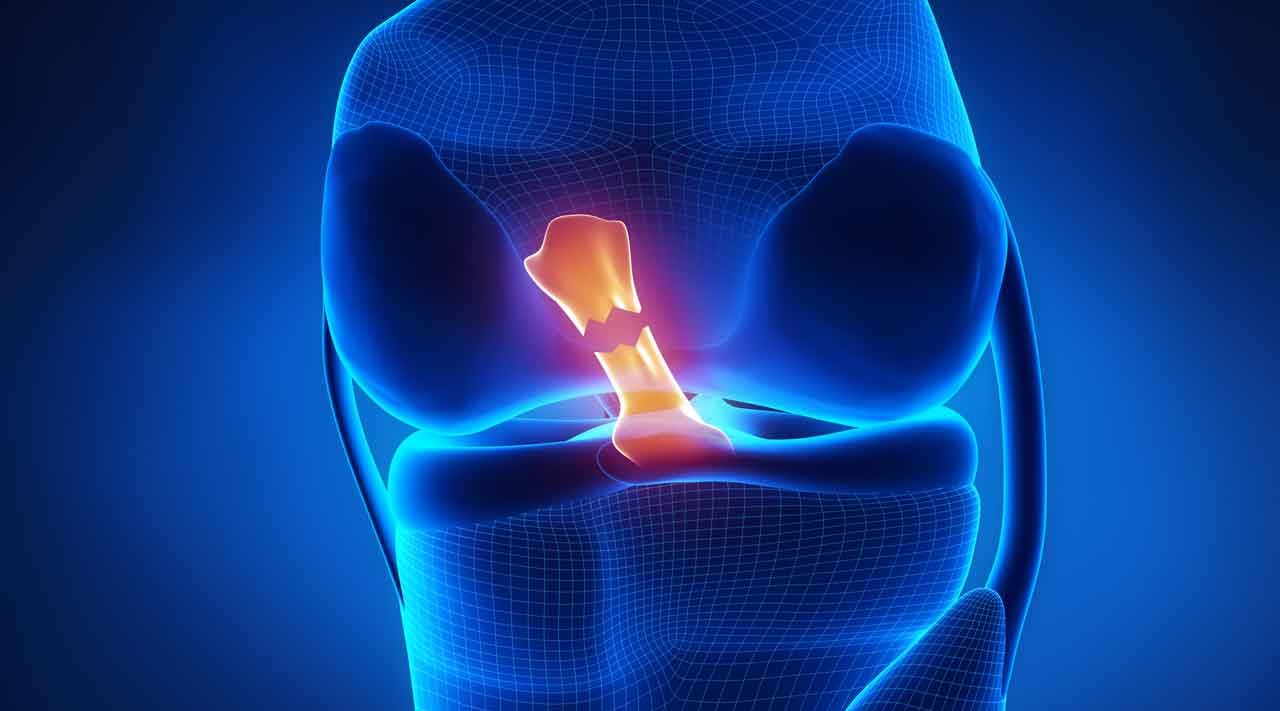Torn ACL Symptoms

Knee injuries can be painful, and a torn ACL and meniscus can make walking difficult. Here’s what you should know about torn ACL symptoms and who’s at risk for this common injury.
Olympic skier Philppe Marquise faced an extra challenge as he competed on the slopes at the 2018 Winter Olympics in Pyeongchang, South Korea. He was suffering from a torn anterior cruciate ligament (ACL), which connects the thighbone (femur) to the shinbone (tibia).
The injury occurred during an earlier World Cup ski event. But because he was determined his torn ACL wouldn’t keep him out of the Olympics, the 28-year-old Canadian refused surgery and didn’t stop his training to heal. Instead, relying on sheer grit and a knee taped for support, Marquise was determined to go for the gold.
YOU MIGHT ALSO LIKE: Why Does My Knee Hurt?
Unfortunately, having a torn ACL causes the knee to become unstable — and Marquise became acutely aware of this fact when his knee gave out on his first moguls run (a freestyle skiing competition stressing technical turns and speed) in the final event, ending his Olympic dream.
Although participating in sports is a risk factor for knee injuries, you don’t have to be a world class athlete to find yourself with torn ACL symptoms. More than 100,000 Americans injure their ACL each year.
What is a torn ACL and who’s at risk?
When you walk or run, your knees and leg bones are held in place by the ACL on each leg, along with other ligaments. Sudden quick movements, especially during active sports, can result in the ACL being stretched and even partially or completely torn.
If you are a “weekend warrior” and enjoy getting exercise by playing basketball, football, tennis, volleyball or soccer, or skiing, you’re at increased risk of a torn ACL. The injury is most often associated with pivoting or sidestepping maneuvers, awkward landings, sudden stops, and jumping, the American Academy of Orthopedic Surgeons points out.
And it’s not only adults who have ACL injuries. The rate of torn ACLs in kids, mostly from sports injuries, has increased more than two percent a year over the past two decades, according to research published in the journal Pediatrics.
Torn ACL symptoms
If you tear your ACL, you’ll likely feel pain immediately, and your knee may feel unstable. Over the course of a few hours, your knee may swell significantly.
Tenderness in your knee joint along with a loss of full range of motion and difficulty in walking due to the discomfort of torn ACL are also common symptoms.
When you see a doctor for evaluation of torn ACL symptoms, a magnetic resonance imaging (MRI) scan may be ordered to look for a torn ACL and to check for evidence of injuries to other knee ligaments and the flexible connective tissue known as cartilage found on each side of the knee. X-rays may be used to make sure you don’t also have any fractured bones.
Torn ACL and meniscus
To understand what a torn ACL is, consider your knee as essentially a hinged joint held together by the ACL and other ligaments. The ACL runs diagonally in the middle of the knee, keeping the shinbone from sliding out in front of the thighbone, and allowing for knee stability as you rotate your leg. Two wedge-shaped pieces of rubbery tough cartilage, called meniscus, are located between your shinbone and thighbone, where they function as "shock absorbers."
A torn ACL and meniscus injury often occur together, the American Academy of Orthopedic Surgeons points out. If you tear your meniscus, you can feel a “pop” and, over the next few days, you’ll likely experience, pain, stiffness, and swelling in your knee. You may also have the sensation your knee is “giving away” and find you can’t move your knee easily.
Torn ACL recovery time
Many people recover from an ACL injury without surgery. However, there’s no exact way to predict torn ACL recovery time. It varies from person to person and depends in large part on your activity level, the degree of the injury, and the symptoms of knee instability.
The recovery time for a partially torn ACL is often favorable, with the recovery and rehabilitation period lasting around three months, according to the American Academy of Orthopedic Surgeons.
A completely torn ACL has a less favorable outcome without surgery — some people are unable to participate in pivoting-type sports, and others have instability even while simply walking. However, whether surgery is needed varies, depending on an individual’s original injury and the physical demands of a person’s lifestyle and work.
Updated:
March 27, 2020
Reviewed By:
Janet O’Dell, RN